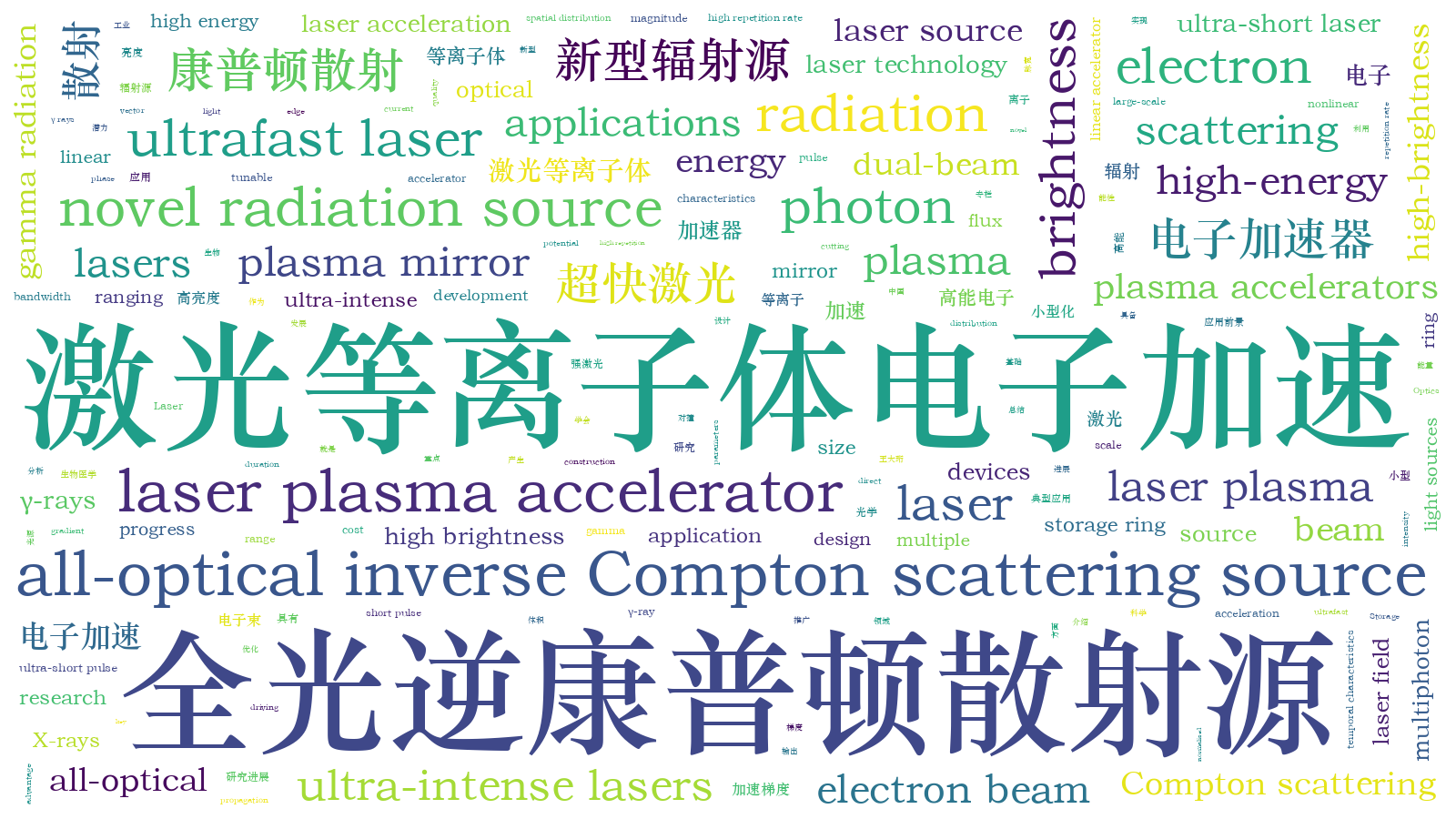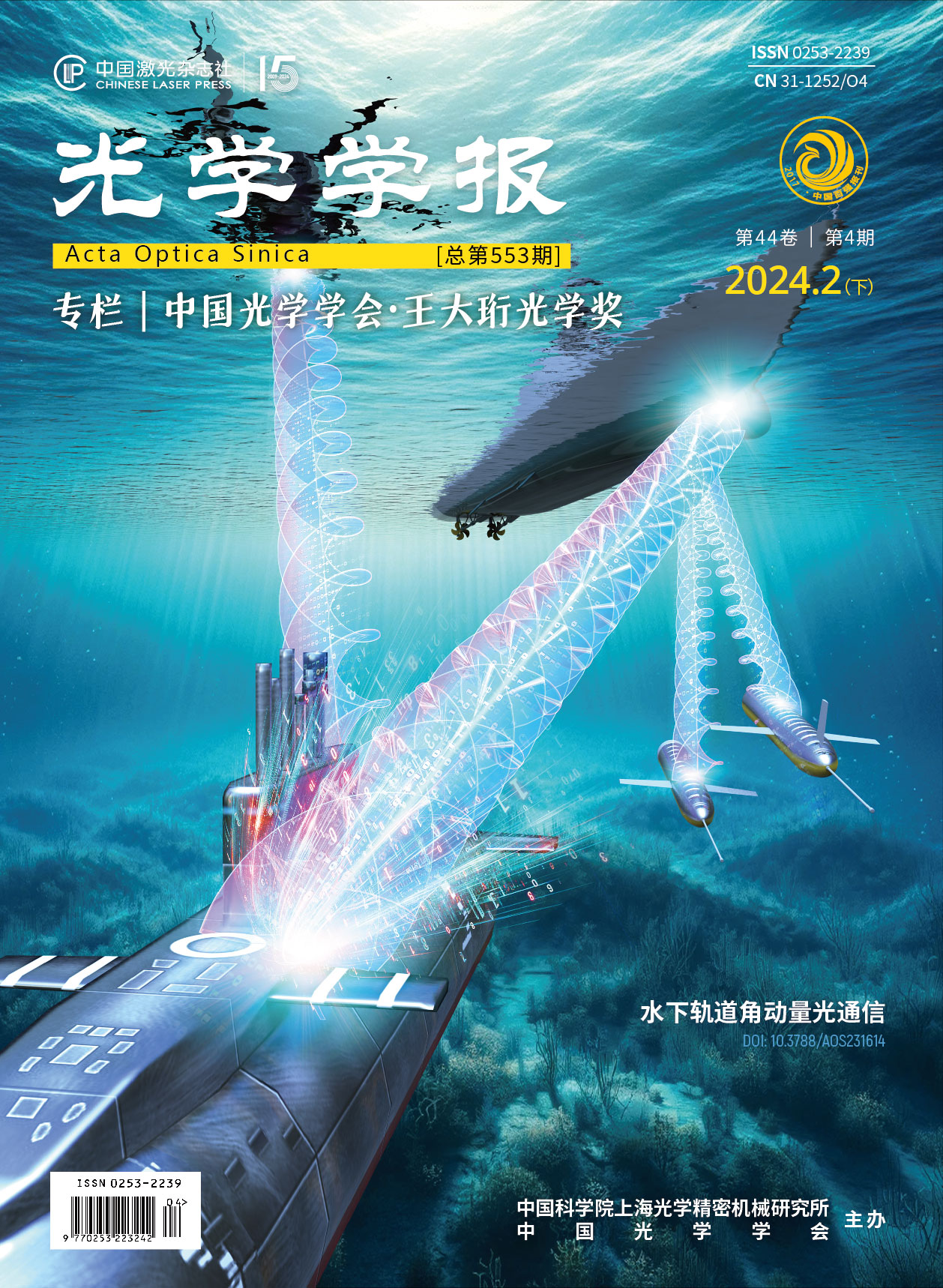全光逆康普顿散射源特邀综述
Inverse Compton scattering (ICS) sources can generate high-energy radiation and have significant applications in various fields. In traditional ICS light sources, the electron beams are primarily sourced from storage rings. Storage rings provide high repetition rate electron beams, operate stably, and allow for multiple collisions with lasers, making it easier to achieve higher photon flux and enhance the average γ-ray flux. However, storage ring-based ICS devices cannot produce radiation with short duration, limiting their applications in ultrafast processes. In addition to storage ring electron accelerators, there are linear electron accelerators capable of providing high-brightness electron beams at high average currents. In recent years, with the continuous advancement of ultra-intense and ultra-short laser technology, ICS devices combining linear electron accelerators with ultra-intense and ultra-short lasers have begun to emerge. For example, the under-construction ELI-NP facility is based on this design and can generate X/γ-rays with shorter pulse widths, making it a highly promising source for ultra-short gamma radiation.
However, both storage ring-based ICS devices and linear accelerator-based ones are costly. Furthermore, their bulky size limits their applications, particularly in desktop radiation sources. The progress in ultra-intense and ultra-short laser technology has propelled the development of laser plasma accelerators, especially laser Wakefield accelerators. Laser plasma accelerators offer a three-order-of-magnitude increase in acceleration gradient compared to traditional accelerators, significantly reducing the size of accelerators. Laser plasma accelerators open up a new technological pathway for high-energy radiation sources. Using electron beams generated by laser plasma accelerators for ICS enables all-optical inverse Compton scattering sources (AOCSs).
The AOCS promotes the desktop applications of radiation sources and reduces their cost. Another prominent advantage of AOCSs compared to traditional accelerator-based ICS devices is their ability to generate higher brightness and ultra-short pulse γ-rays. The novel AOCSs, with their unique advantages such as high energy, high peak brightness, small source size, and quasi-monochromatic characteristics, have now become a crucial tool in many cutting-edge scientific fields. While significant progress has been made in AOCSs, there are still some challenges. We provide insights for future designs by summarizing past developments.
The ICS sources have made significant progress in generating high brightness, high-energy, quasi-monochromatic radiation, etc. The current all-optical ICS experimental schemes can be classified into two categories based on the source of scattering beams. One is the single beam combined with a plasma mirror approach, and the other is the dual-beam approach (Fig. 2). In the former, the scattering laser is derived from the driving laser reflected by a plasma mirror, while in the latter, the scattering laser comes from a separate laser source.
AOCS is particularly suitable for generating high-brightness radiation. In 2012, the research team at the Laboratoire d'Optique Appliquée in France first employed the single-beam approach combined with a plasma mirror to achieve self-synchronized ICS, resulting in X-rays with energies of approximately 100 keV, a total photon count of 1×108, and a brightness of 1×1021 photon·s-1·mm-2·mrad-2 per 0.1% BW (bandwidth). In 2014, Sarri et al. reported experimental evidence of nonlinear relativistic Thomson scattering (TS) in dual-beam and head-on propagation conditions, resulting in peak brightness of γ-ray exceeding 1.8×1020 photon·s-1·mm-2·mrad-2 per 0.1% BW at 15 MeV. In 2016, the research team at the Shanghai Institute of Optics and Fine Mechanics, the Chinese Academy of Sciences, used a self-synchronized all-optical Compton scattering scheme to produce quasi-monochromatic and ultra-bright MeV γ-rays, with a brightness of 3×1022 photon·s-1·mm-2·mrad-2 per 0.1% BW. In 2022, a research team from Peking University obtained radiation with an estimated brightness of up to 1022 photon·s-1·mm-2·mrad-2 per 0.1% BW at 10 MeV.
AOCS is also well-suited for producing high-energy radiation. In 2014, Liu et al. produced gamma photons with energies exceeding 9 MeV. In 2017, Yan et al. employed the dual-beam approach, utilizing ultra-intense lasers [
From the radiation parameters obtained in recent years of all-optical ICS experiments, it is evident that source sizes can reach the micrometer scale, and photon energies cover the range from tens of keV to tens of MeV. Photon yields range from 107 to 1011, and brightness can reach 1022 photon·s-1·mm-2·mrad-2 per 0.1% BW. Consequently, AOCS stand out in terms of brightness, spatial distribution, and photon flux, possessing unique advantages in various application domains. We summarize the design approach and outline relevant applications (Figs. 5 and 6) to serve as future application goals for the design of ICSs.
Compared to traditional ICS devices, AOCSs offer several key advantages: smaller size, lower cost, excellent spatial and temporal characteristics, and higher brightness. Therefore, AOCSs hold significant value for various applications. While AOCSs show great promise, they are currently in the experimental exploration and development phase and have not yet been widely deployed in large-scale projects. Enhancing the photon quality of AOCSs to meet application requirements remains a pressing challenge for research teams. Furthermore, some unique features of AOCSs are still waiting to be fully explored and exploited. If these issues can be addressed, AOCSs will bring new opportunities to the development of multiple fields.
魏见萌, 夏长权, 冯珂, 张虹, 姜海, 葛彦杰, 王文涛, 冷雨欣, 李儒新. 全光逆康普顿散射源[J]. 光学学报, 2024, 44(4): 0400004. Jianmeng Wei, Changquan Xia, Ke Feng, Hong Zhang, Hai Jiang, Yanjie Ge, Wentao Wang, Yuxin Leng, Ruxin Li. All-Optical Inverse Compton Scattering[J]. Acta Optica Sinica, 2024, 44(4): 0400004.







